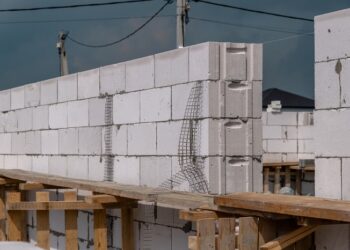Materials for walls
Stone walls can be built from a wide variety of materials. Of course, the most common material is brick. Brick walls are quite durable and durable. The thickness of the wall is always equal to a multiple of half the brick. Depending on the required thermal conductivity, the thickness can be from 120 mm to 640 mm. The smaller the brick, the more complex structures can be reproduced, with their help it is convenient to decorate the facades of buildings. Now, not only materials for the walls are in great demand, but also stretch ceilings, because during a major overhaul, not only the walls are repaired, but the entire apartment, including the ceiling.
However, the brick itself is characterized by good thermal conductivity, which means that in the cold season it will take more time to heat the house. Therefore, during construction, either hollow bricks are used, or during the masonry process, cracks are specially left that are filled with air. This approach allows you to reduce the thermal conductivity of the brick..
Another small disadvantage of brick is its ability to absorb moisture well. During seasonal operation (that is, not with constant warming up of the house), bricks collect a lot of moisture in the fall, which turns into ice in the brick structure in winter. It is clear that this leads to the destruction of the material from the inside and a quick overhaul of the whole house..








